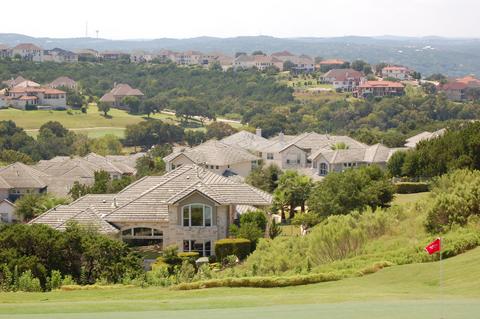
Home prices in the Austin, TX, area are expected to be fairly stable over the coming five years, good news for owners adjacent to the River Place Country Club.
Economists who track the housing market make their predictions based in part on the ratio of rents to home prices. When the ratio between the two gets out of whack, there is a natural, historic tendency to move back toward equilibrium. At the moment in most U.S. markets, the ratio is way out of whack, and the only way to regain equilibrium is for home prices to drop, some dramatically, even as rents rise to meet them.
Fortune magazine's web site is currently displaying an interesting chart of home and rental prices in 54 U.S. metro areas. It uses the median prices for "upscale" homes, those that sell for roughly twice that of the market's median price. If the median price in a market is $200,000, then the upscale example in Fortune's chart is $400,000.
The chart shows the ratio of sale prices to rent prices for similar homes in an area, the predicted changes in both (on a percentage basis) in order to achieve equilibrium in the next five years, and how the median prices of the homes are expected to change over that time.
Only seven of the 54 markets' homes will increase in price over the next five years, according to the Fortune calculations, and only one by as much as 10 percent (9.9% actually). Cleveland, whose upscale median price for homes is indicated at $249,000, is expected to reach $273,000 in five years
According to the Fortune chart, the only southern areas where home prices will drop less than double-digit percentages are New Orleans (-2.1%) and Austin (-4.4) (Note: The December issue of the HomeOnTheCourse Community Guide will feature an overview of Austin and its golfing communities.) The metro markets in the worst shape are Orlando (-34.2%), Miami (-32.2), the East Bay of San Francisco (-31), and Tampa (-28). If you live in Baltimore (-27.8%) and have an eye toward moving to, say, Raleigh (-14.7), doing so sooner might be better than later, from a purely financial standpoint.
You will find the chart for the 54 metro areas at the Fortune web site (click here).



